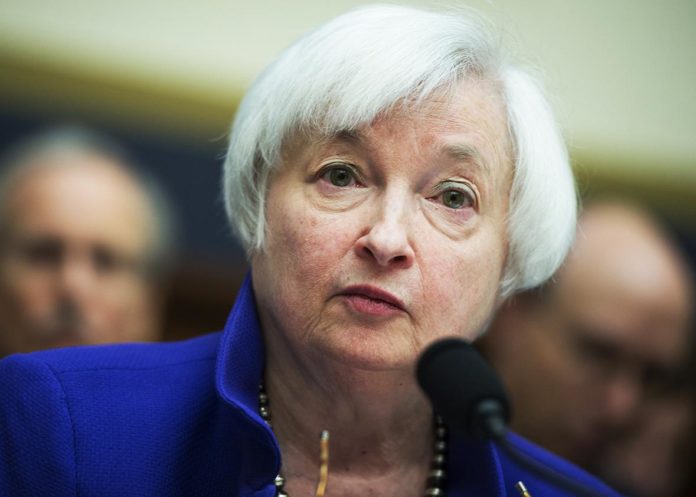Stocks popped higher again today in anticipation of strong Big Tech earnings. The Dow, S&P, and Nasdaq Composite all gained as Treasury yields plunged. The 10-year Treasury yield fell to 4.09%, down from the Friday high of 4.30%.
Yields fall as Treasurys rally. The iShares Barclays 20+ Year Treasury Bond Fund (NASDAQ: TLT), unsurprisingly, zipped 2.6% higher this morning. If the fund closes at its current price, that will mark its first daily gain greater than 1.0% in almost 20 trading sessions.
The reason for this bounce? Some analysts think it has something to do with forward guidance, which hasn’t been very good thus far from most companies this earnings season.
“The market is just starting to get some indication that economic data moving forward is likely to slow,” said Cornerstone Wealth CIO Cliff Hodge.
“The knock-on effects from there, perhaps, gives the Fed a bit more breathing room.”
Poor forward guidance could ironically translate to market gains if it leads to a decrease in rate hike expectations. We’ll find out how true that turns out to be when tech giants Alphabet (NASDAQ: GOOG) and Microsoft (NASDAQ: MSFT) report after the closing bell this afternoon.
But that’s probably not why yields fell today. At least, that’s not the whole reason for the yield skid. Instead, a note from one of the market’s top rate gurus may be influencing traders more than anything else.
Bank of America strategist Mark Cabana released a note last Friday suggesting that, in order to rescue Treasurys from massive illiquidity problems, a major “Treasury buyback” would soon commence.
Most analysts assumed that the Fed would eventually step in and buy Treasurys to provide liquidity, thus causing yields to fall whilst simultaneously raising the federal funds rate – a practice akin to stepping on the brakes and accelerator at the same time.
But Cabana offered a different prediction several weeks ago that, instead of the Fed, the US Treasury would unveil a Treasury bond buyback program.
At the time, Cabana said that “practical steps like liquidity providing UST buybacks are far in the future.”
In other words, he didn’t see Treasury buybacks actually happening until next year at the earliest.
As of Friday, though, Cabana’s attitude has changed substantially. He now thinks Treasury buybacks are “increasingly likely” and because they would be “quite effective” at providing Treasury liquidity without loading up the Fed’s balance sheet again.
Cabana said in his note that a buyback program “would see Treasury buyback old illiquid debt with new on-the-run securities or cash balance. This would limit how dislocated off-the-run issues are likely to trade due to the possibility of UST buying. Liquidity conditions would improve for wide range of off-the-run USTs.”
In plain English, the Treasury would issue new bonds (aka, on-the-run securities) to buy old, illiquid bonds (off-the-run securities). The bonds being issued would be short-term while the bonds being bought back would be longer-term ones.
That’s why TLT (+2.60% on the day) outperformed the iShares 7-10 Year Treasury Bond Fund (NASDAQ: IES), which only climbed 1.10% by comparison. This move would steepen the yield curve as well, benefiting bank stocks.
A Treasury buyback program is much easier for politicians and the Fed to stomach, as it would be seen as having a net zero effect on the Fed’s battle with inflation.
The strategy seems like a bulletproof solution to the Treasury illiquidity problem outside of one major drawback that Curvature repo guru Scott Skyrm outlined in a note:
“The Treasury recognizes that much of the Treasury market is illiquid, especially older off-the-run issues. The idea is to buy older securities and issue bills to pay for the purchases. Pretty good in theory, except decreasing the amount outstanding of older issues also makes them less liquid.”
Nonetheless, a buyback program would almost certainly drop long-term yields (even if it results in increased volatility), sparking a major equity rally.
Nomura strategist Charlie McElligott believes that Treasury buybacks could start imminently, too.
“The ‘best’ option remains debatable – but without question, the idea of Treasury ‘buybacks’ is ABSOLUTELY ‘trending,’ and picking-up velocity in recent days,” he wrote.
That, coupled with the market’s bullish seasonal tendency and Big Tech earnings could easily result in a market melt-up of epic proportions in the coming weeks. Remember, too, that the corporate stock buyback window reopens for most companies on October 31st, which should only fan the bullish flames.








